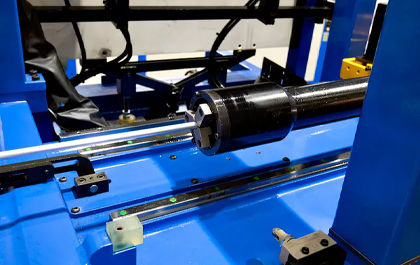1. Equipment Overview
Three-axis drilling and glue wrapping machine is an advanced automation equipment that combines the functions of drilling and glue wrapping. It is mainly used in industrial production scenarios where drilling holes on workpieces and subsequently glue-encapsulated treatment, such as electronic components manufacturing, automotive parts processing and other fields.
2. Working principle
1. Drilling part
The three-axis drilling system is based on the motion control of the three coordinate axes X, Y, and Z. First, the position coordinates of the drilling hole are set through CNC programming, and the equipment's control system will drive the drill bit to drill holes at the designated position of the workpiece according to these instructions. In the X-axis and Y-axis directions, positioning in the plane can be achieved, and the positioning accuracy can reach ±0.01mm or even higher, which ensures the accuracy of the drilling position. In the Z-axis direction, the feed speed and depth of the drill bit can be flexibly adjusted according to different workpiece materials and drilling requirements. For example, when drilling aluminum alloy materials, the feed speed may be faster than drilling Stainless steel material is faster.
Drilling power is usually provided by a motor, which transmits power to the drill bit through transmission devices (such as belts, screws, etc.). Some high-end three-axis drilling and glue wrapping machines are also equipped with automatic tool changing systems. When drilling holes of different hole diameters, they can quickly replace the drill bits and improve production efficiency.

2. Glue-encapsulated part
After the drilling is completed, enter the glue wrapping process. Glue wrapping is usually applied accurately by means of glue through a glue gun or glue pump around the drill hole or the entire surface of the workpiece. The movement of the glue gun is also controlled by a three-axis system, which can be glued along a preset path. During the glue wrapping process, the flow rate of the glue can be controlled, depending on the type of glue, the size of the workpiece and the glue wrapping requirements. For example, for workpieces requiring thicker glue layers, the glue flow rate will increase accordingly.
Some three-axis drilling glue wrappers also have glue curing functions. The glue is quickly cured by ultraviolet irradiation (if it is UV glue) or heating (for thermally cured glue), forming a solid glue layer. Parameters such as curing time and temperature (or ultraviolet intensity) can be adjusted according to the characteristics of the glue.
3. Equipment Advantages
1. High-precision machining
Thanks to the three-axis linkage control, both drilling and glue covering can achieve high accuracy. This can ensure the stability of product quality for some products that require high dimensional accuracy and glue layer thickness accuracy, such as precision electronic circuit boards, small sensors, etc.
2. Improve production efficiency
The two functions of drilling and glueing are integrated, reducing the transfer time of workpieces between different equipment. Moreover, automated operating processes can achieve continuous production without frequent manual intervention, greatly shortening the production cycle. For example, when producing large batches of electronic component brackets, the production efficiency of the three-axis drilling glue wrapper can be increased by 30% to 50% compared to traditional separate operating equipment.
3. Flexibility and versatility
Programming control can be used to adapt to workpieces of different shapes and sizes and diverse machining requirements. For different drilling layouts and glue wrapping patterns, you only need to modify the CNC program. This enables the equipment to be widely used in the production of various industries and products, such as drilling and glueing of automotive interior parts, processing of toy parts, etc.
4. Stable and reliable quality
The automated processing process reduces the influence of human factors and ensures the consistency of drilling quality and glue quality of each workpiece. Moreover, the equipment monitoring system can detect parameter changes during processing in real time, such as the wear of the drill bit, the residual glue, etc., and promptly issue alarms and make adjustments, further improving the quality of the product.
IV. Application areas
1. Electronics Industry
Used for drilling and waterproof glue-in treatment of electronic circuit boards. On the circuit boards of some outdoor electronic equipment, glueing after drilling can effectively prevent moisture, dust, etc. from entering the circuit board, improving the service life and reliability of the circuit board.
2. Automobile manufacturing industry
Auto parts such as seat brackets, interior parts, etc. may require drilling and glueing to enhance the corrosion resistance and comfort of the parts. For example, the seat bracket is drilled and glued to prevent metal from rusting, and it can also play a certain role in cushioning.
3. Mechanical hardware industry
Some small mechanical parts need to be drilled and glued during assembly to achieve sealing, shock absorption and other functions. For example, the drilling and glue of the small motor housing is used to seal the internal structure of the motor to prevent dust and liquid from entering.

 +86 138 2888 1856
+86 138 2888 1856 




